Gloomy, grey skies are synonymous with British culture.
But an incredibly rare satellite image shows the UK completely cloud-free.
From the green lowlands of Ireland and England to the rugged Highlands of Scotland, the picture shows the whole landscape of the British Isles clearly visible.
It was captured by a European Space Agency (ESA) satellite on April 2 in the wake of England’s sunniest March since 1910.
The image reflects a period marked by extended sunshine and exceptionally dry weather, and is so clear that sediment patterns can even be seen off the coast.
The satellite that took the photo – ESA’s Copernicus Sentinel-3 – systematically measures Earth’s oceans, land, rivers, lakes, land ice, sea ice and atmosphere as it orbits around our planet.
On April 1 – one day before this picture was taken – the Met Office announced that England had enjoyed it’s sunniest March since records began.
Some 185.8 hours of sunshine were measured across England – 59 per cent more than the long-term average – according to their figures.
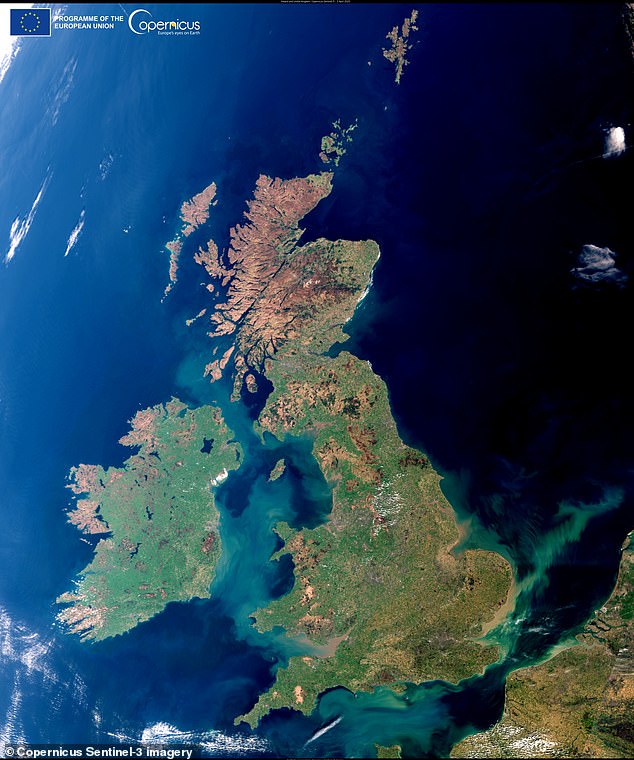
The incredibly rare photograph shows a completely cloud-free sky above the British Isles. It reflects a period of extended sunshine and exceptionally dry weather

LONDON: People enjoying the sun in St James’s Park on Sunday. The temperature over the last week has been much higher than usual
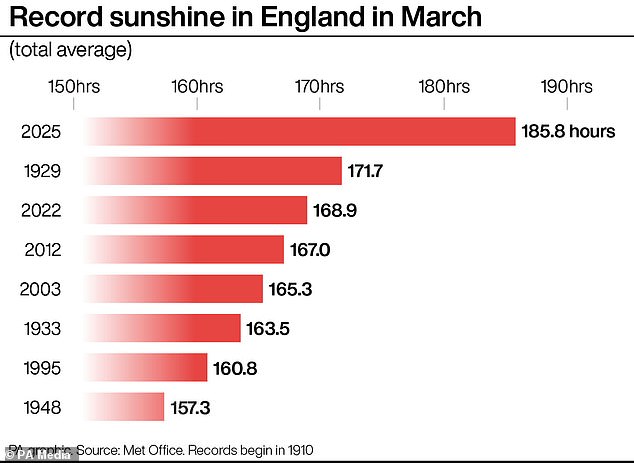
Some 185.8 hours of sunshine were measured across England – 59 per cent more than the long-term average
This beats the previous record of 171.7 hours set in 1929.
Wales saw its second sunniest March, with 53 per cent more hours than average.
Scotland and Northern Ireland also saw an above average amount of sunshine, at 20 per cent and 13 per cent respectively, though neither nation came close to record levels.
Met Office scientist Emily Carlisle said: ‘Persistent high pressure, along with a lack of fronts arriving from the west, has meant that many have enjoyed a warm, dry and very sunny March.’
Across the UK as a whole there were 158.1 hours of sunshine, the third highest total recorded for March since records began in 1910.
Last month was also very dry, with the UK seeing just 43 per cent of its average rainfall for March.
Last week also heralded the warmest day since September 21 2024, as temperatures reached 24°C (75.2°F) at RAF Lakenheath in Suffolk on Friday.
Parts of the UK were warmer than Marbella and Ibiza in Spain and Mykonos in Greece, which were all 18°C (64.4°F).

Official Met Office figures show which parts of the country experienced the most hours of sunshine during March
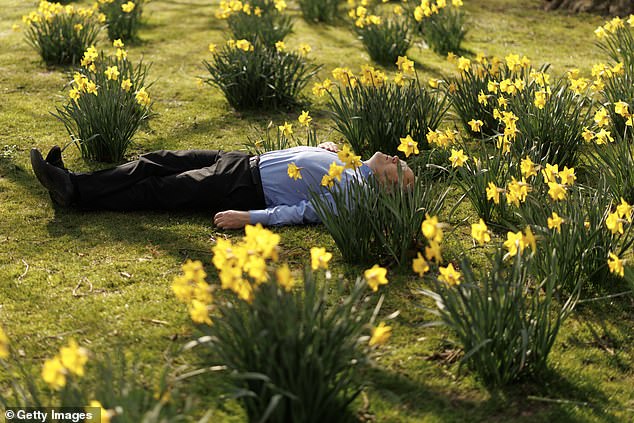
A man taking a break in the sunshine in St James’s Park, London, on March 20, which is the spring equinox
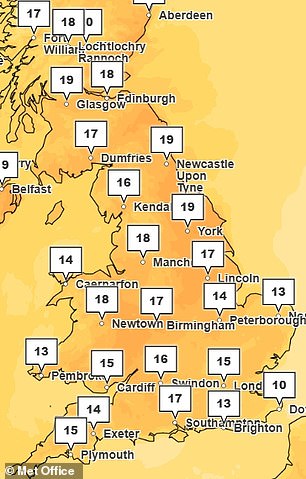
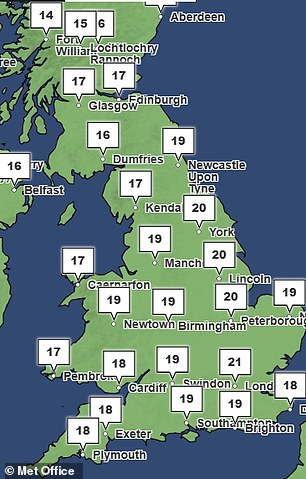
While temperatures have dropped at the start of this week, Brits can expect another warm weekend. Pictured left is Friday’s forecast, pictured right is Saturday’s
The average temperature for this time of year is around 12°C (53.6°F) in England and 10°C (50°F) in Scotland.
However, while temperatures have dropped again at the start of this week, Brits can expect another warm weekend with maps predicting temperatures of up to 20°C (68°F) across the country.
One would normally expect the rain clouds to be in sight for the start of the Easter holidays.
But the Met Office said it will remain dry and settled over the coming days.
WHAT IS THE EUROPEAN SPACE AGENCY’S SENTINEL 3 SATELLITE AND WHAT DOES IT DO?
Sentinel 3 is primarily an ocean study mission, developed by the European Space Agency (ESA) as part of its Copernicus Programme. However, it is also able to provide data on the atmosphere and land masses.
Sentinel 3A was launched on February 16, 2016, with a twin, Sentinel 3B, arriving in orbit on April 25, the seventh of Esa’s Sentinel Earth observation satellite.
The two satellites orbit 506 miles (815 km) above Earth, on opposite sides of the planet.
The multi-billion Copernicus programme aims to help predict weather phenomena such as El Nino and track the progress of global warming.

Sentinel 3 (pictured in video footage) is primarily an ocean study mission, developed by the European Space Agency as part of its Copernicus Programme. However, it is also able to provide data on the atmosphere and land masses
Their data could also help shipping companies chart more efficient routes and may be used to monitor forest fires, water pollution and oil spills.
The Copernicus project is described by ESA as the most ambitious Earth observation programme to date. The European Union and the ESA have committed funding of more than eight billion euros (£7.12bn / $9.8bn) to it until 2020.
The launch of the Copernicus project became especially urgent after Europe lost contact with its Earth observation satellite Envisat in 2012 after 10 years.
Sentinel-3 makes use of multiple sensing instruments to accomplish its objectives. These are: the sea and land surface temperature radiometer (SLSTR), ocean and land colour instrument (OLCI), SAR altimeter (SRAL), doppler orbitography and radiopositioning integrated by satellite (DORIS), and a microwave radiometer (MWR).
Share or comment on this article:
Britain is entirely cloud-free in incredibly rare satellite image – following the sunniest March since 1910